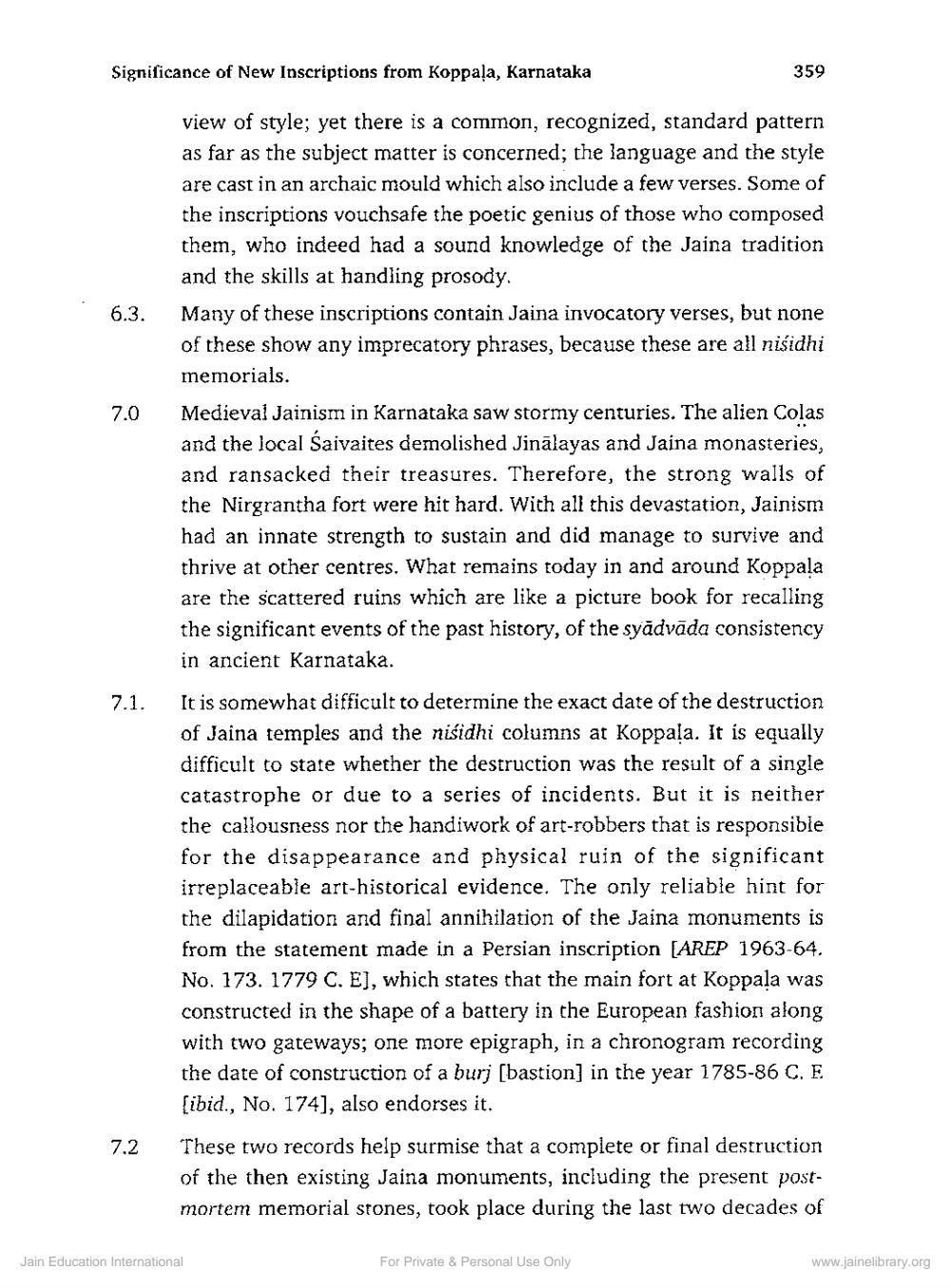Book Title: Significance of New Inscriptions from Koppala Karnataka Author(s): Hampa Nagrajaiha Publisher: Z_Nirgranth_Aetihasik_Lekh_Samucchay_Part_1_002105.pdf and Nirgranth_Aetihasik_Lekh_Samucchay_Part_2 View full book textPage 6
________________ Significance of New Inscriptions from Koppala, Karnataka 6.3. 7.0 7.1. 7.2 view of style; yet there is a common, recognized, standard pattern as far as the subject matter is concerned; the language and the style are cast in an archaic mould which also include a few verses. Some of the inscriptions vouchsafe the poetic genius of those who composed them, who indeed had a sound knowledge of the Jaina tradition and the skills at handling prosody. 359 Many of these inscriptions contain Jaina invocatory verses, but none of these show any imprecatory phrases, because these are all nisidhi memorials. Medieval Jainism in Karnataka saw stormy centuries. The alien Colas and the local Śaivaites demolished Jinalayas and Jaina monasteries, and ransacked their treasures. Therefore, the strong walls of the Nirgrantha fort were hit hard. With all this devastation, Jainism had an innate strength to sustain and did manage to survive and thrive at other centres. What remains today in and around Koppala are the scattered ruins which are like a picture book for recalling the significant events of the past history, of the syädvāda consistency in ancient Karnataka. It is somewhat difficult to determine the exact date of the destruction of Jaina temples and the nisidhi columns at Koppala. It is equally difficult to state whether the destruction was the result of a single catastrophe or due to a series of incidents. But it is neither. the callousness nor the handiwork of art-robbers that is responsible for the disappearance and physical ruin of the significant irreplaceable art-historical evidence. The only reliable hint for the dilapidation and final annihilation of the Jaina monuments is from the statement made in a Persian inscription [AREP 1963-64. No. 173. 1779 C. EJ, which states that the main fort at Koppala was constructed in the shape of a battery in the European fashion along with two gateways; one more epigraph, in a chronogram recording the date of construction of a burj [bastion] in the year 1785-86 C. E (ibid., No. 174], also endorses it. These two records help surmise that a complete or final destruction of the then existing Jaina monuments, including the present postmortem memorial stones, took place during the last two decades of Jain Education International For Private & Personal Use Only www.jainelibrary.orgPage Navigation
1 ... 4 5 6 7 8 9 10 11 12 13 14 15 16 17 18 19 20
